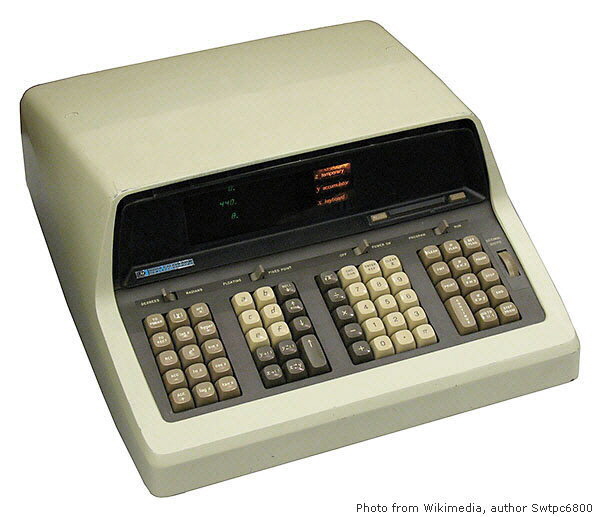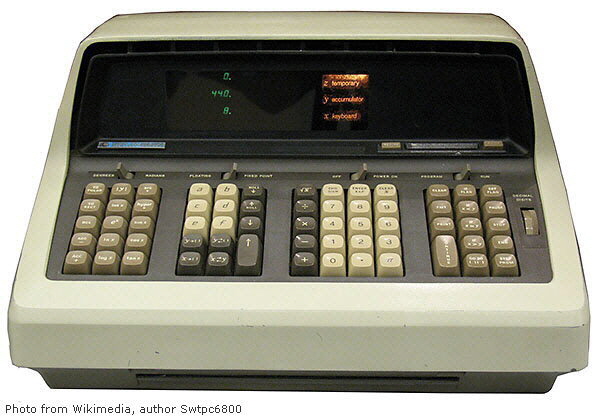Hewlett-Packard HP 9100A

Hewlett-Packard HP 9100A
Distinctive features:
Programmable scientific calculator, using RPN (Reverse Polish Notation) with a 3-level stack.
Uses a crt (Cathode Ray Tube) to display the contents of the
three registers.
Technical details:
Capabilities - Scientific functions, programmable with 16 storage registers and 196 program steps.
Display - 3 lines showing the contents of the three RPN registers, using cathode ray tube, see below.
Technology - DTL (Diode-Transistor Logic) implemented using discrete transistors. Ferrite core memory.
Made in the USA. Launched in 1968.
Significance:
The HP 9100A, with its large number of scientific functions and being programmable, was the most capable electronic desktop calculator of the time. In the
following year the even more capable HP 9100B was launched.
Within a few years, as technology advanced, Hewlett-Packard managed to develop hand-held models with similar functionality. These were the HP-35 (with scientific functions) launched in 1972, and the HP-65 (with scientific functions and programmable) launched in 1974.

Front view showing the numbers in the 3 register on the green crt display, and the labels to the right indicating that they are the contents of the 'z temporary', 'y accumulator', and 'x keyboard' registers.

Close up of the keyboard showing scientific function keys and keys for programming.
The HP-9100A was described in considerable detail in the Hewlett-Packard Journal of September 1968.
There is an enormous amount of information about the HP-9100A and HP-9100B gathered by David Hicks at the Museum of HP Calculators at http://www.hpmuseum.org/hp9100.htm.
Douglas W. Jones, of the University of Iowa Department of Computer Science, has a very interesting description, with photographs, of the ferrite magnetic-core storage of the HP 9100B on the page "An HP9100B core memory module".
Electronic Desk
Calculators
Vintage Calculators
Text & photographs copyright, except where stated otherwise, © Nigel Tout 2000-2026.